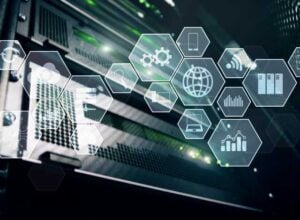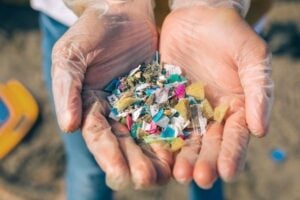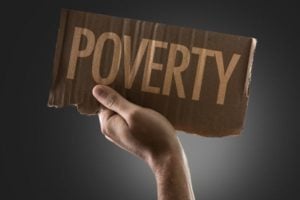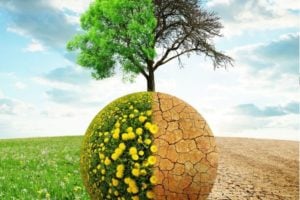Deadline: 29 October 2025
The European Commission is seeking proposals for the topic Waste-to-Value Devices – Circular Production of Renewable Fuels, Chemicals and Materials.
Specific Objectives
- The Challenge seeks ambitious proposals that address one (and only one) of the following focus areas:
- Area 1: Fully integrated waste-to-value devices
- This includes devices for converting waste streams into (feedstock for) fuels, chemicals and materials and devices for remediation; where processes are solely driven by renewable energy sources (preferably directly by sunlight) and focus on the selective production of added value products, beyond hydrogen as the sole end product:
- Fully integrated solar reforming or synthetic biology devices, enabling the treatment of synthetic polymer materials, while delivering fast and efficient decomposition under sustainable reaction conditions (including the use of process chemicals).
- Integrated capture and conversion technologies, capturing and converting feedstock from flue gases, or wastewater in a single step/ single device into fuels, chemicals and materials, providing increased energy- and materials efficiency as compared to not fully integrated process chains.
- Membrane-based and electrochemical brine mining technologies recovering raw materials, CO2 and water from seawater desalinisation brines.
- Ex-situ remediation devices based on microbial/enzymatic and/or photocatalytic degradation, both purifying wastewater and seawater of noxious substances, metals, or nano-/microplastics, and producing added value remediation products. This should take place in a reactor, not in the open field.
- This includes devices for converting waste streams into (feedstock for) fuels, chemicals and materials and devices for remediation; where processes are solely driven by renewable energy sources (preferably directly by sunlight) and focus on the selective production of added value products, beyond hydrogen as the sole end product:
- Area 2: Understanding underlying mechanisms by means of computational material science and AI
- Projects in this focus area must deliver advances and scientific breakthroughs in the fundamental understanding of the underlying physical, chemical, and biological processes that will enable fully sustainable and scalable waste-to-value devices. Projects should address all the following specific objectives:
- Explore fundamental phenomena crucial to multiple waste-to-value device types, such as the development of efficient, stable and inexpensive catalysts, interface engineering and the effect of the surrounding medium.
- Develop more accurate and less resource-intensive quantum mechanical and AI methods to guide, predict and interpret reliably experimental works.
- Bridge the scales from describing properties at the atomic, mesoscopic level up to the macroscopic device level within a multiscale approach and describe phenomena over different timescales.
- Adopt a holistic approach to exploring phenomena applicable to multiple waste-to-value device types (aligned with Area 1). Devices stemming from Area 1 should serve to validate the developed theoretical models.
- Projects in this focus area must deliver advances and scientific breakthroughs in the fundamental understanding of the underlying physical, chemical, and biological processes that will enable fully sustainable and scalable waste-to-value devices. Projects should address all the following specific objectives:
- Area 3: Cells from scratch by means of bottom-up synthetic biology
- Projects in this area must look to deliver scientific breakthroughs in bottom-up synthetic biology to enable the use of tailored microbial cell factories for the degradation and valorisation of waste and the production of fossil-free fuels, chemicals, and materials. Projects should address all the following specific objectives:
- Develop synthetic, fully artificial cells for future large-scale biotechnology applications, tailored to deliver desired functionalities such as carbon fixation or synthetic polymer decomposition.
- Engineer cell-like systems to produce compounds from abundantly available building blocks, such as water and carbon oxides.
- Engineer cell-like systems to decompose diverse types of waste, in particular synthetic plastic waste, into compounds that are valorisable as feedstock for a downstream production of fuels, chemicals and materials. At this stage, systems will not have to be completely autonomous and self-replicating, but the integration of different modules should be implemented.
- Projects in this area must look to deliver scientific breakthroughs in bottom-up synthetic biology to enable the use of tailored microbial cell factories for the degradation and valorisation of waste and the production of fossil-free fuels, chemicals, and materials. Projects should address all the following specific objectives:
- Area 1: Fully integrated waste-to-value devices
Scope
- Fossil fuels supply a majority of the world’s energy and also provide the raw materials, or feedstocks, for many essential everyday products. While energy provision is becoming increasingly decarbonized, the production of fuels, chemicals and materials requires carbon atoms as feedstocks. However, their production can be “de-fossilized”, by utilising renewable energy and alternative carbon sources. Likewise, a circular economy approach offers scope to reduce external dependencies and source other essential molecular feedstocks including critical raw materials from wastes.
- This Pathfinder Challenge therefore focuses on the development of next generation technologies that turn today’s problematic waste streams into essential building blocks of a future circular economy. Furthermore, it specifically focusses on currently non- or hard-to-recycle types of synthetic polymer materials (including among other mixtures of different types of plastics, polymeric composite materials, micro-/nanoplastics, untreated plastic waste, diapers, rubber, etc.), flue gases, wastewater and seawater desalination brines. Proposals must target real-life industrial and household waste streams where current recycling methods face insurmountable barriers e.g., due to impurities, the presence of noxious additives, inseparable material mixtures or nonbiodegradable materials. An important side effect is the remediation of waste streams with respect to micro-/nanoplastics, trace metals and noxious substances. These novel technologies should be scalable, easily applicable and deliver products with higher economic value as compared to waste destruction.
- The scope of technological solutions addressed in this Challenge is limited to the following technologies with currently low Technology Readiness Levels (TRLs), where significant synergies by working in a Challenge portfolio are expected: solar reforming and synthetic biology devices, brine mining and integrated capture and conversion technologies. Microbial-based and photocatalytic remediation processes are included as well. Computational material science and AI, and bottom-up synthetic biology are supported as key enablers at the fundamental research level.
- Thermochemical approaches (such as pyrolysis or gasification) and “dark” (not lightdriven) chemical recycling are out-of-scope of this Pathfinder Challenge. Likewise, food and biomass waste, traditional bulk metal waste, glass, paper, cardboard and mono-PET waste are also out of scope.
Funding Information
- Budget (EUR) – Year 2025: 120 000 000
- Contributions: 500000 to 4000000
Eligibility Criteria
- Entities eligible to participate
- Any legal entity regardless of its place of establishment, including legal entities from non-associated third countries or international organisation (including international European research organisations) is eligible to participate (whether it is eligible for funding or not), provided that the conditions laid down in the Horizon Europe Regulation have been met together with any other conditions laid down in the specific call or topic.
- According to Article 2(16) of the HE Regulation, ‘Legal entity’ means any natural or legal person created and recognised as such under national law, EU law or international law, which has legal personality and which may, acting in its own name, exercise rights and be subject to obligations, or an entity without legal personality as referred to in point (c) of Article 200(2) of the Financial Regulation.
- To become a beneficiary, legal entities must be eligible for funding.
- To be eligible for funding, applicants must be established in one of the following countries:
- Member States of the European Union, including their outermost regions:
- Austria, Belgium, Bulgaria, Croatia, Cyprus, Czechia, Denmark, Estonia, Finland, France, Germany, Greece, Hungary, Ireland, Italy, Latvia, Lithuania, Luxembourg, Malta, Netherlands, Poland, Portugal, Romania, Slovakia, Slovenia, Spain, Sweden.
- the Overseas Countries and Territories (OCTs) linked to the Member States:
- Aruba (NL), Bonaire (NL), Curação (NL), French Polynesia (FR), French Southern and Antarctic Territories (FR), Greenland (DK), New Caledonia (FR), Saba (NL), Saint Barthélemy (FR), Sint Eustatius (NL), Sint Maarten (NL), St. Pierre and Miquelon (FR), Wallis and Futuna Islands (FR).
- countries associated to Horizon Europe – Pillar III:
- Albania, Armenia, Bosnia and Herzegovina, Faroe Islands, Georgia, Iceland, Israel, Kosovo, Moldova, Montenegro, North Macedonia, Norway, Serbia, Tunisia, Türkiye, Ukraine, United Kingdom.
- Member States of the European Union, including their outermost regions:
For more information, visit EC.
























